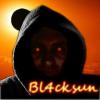
Posted
A beginners question:
Just tried to mimic the walking bass formula of Aimee Nolte described here (from minute 1:50min) with Synfire Pro v2.
Parts of this formula are easy for me to mimic, but heres where I struggle: It actually demands to place in beat 4 (4/4 time assumed) the leading tone for next chords note 1 (vertical scale).
I do not understand how to accomplish this. Tried to do it with interpretation look-ahead and different settings but all seems to deviate from the formula.
Long-term experts - any help ? Thx in advance.
Sa., 28.05.2022 - 16:59 Permalink
If you can handle the piano well , then record the lessons from the video in Synfire.
Otherwise look up some piano midi's with walking bass patterns.
You might be able to make variations on them.
Much you tube videos to find: start simple
Sa., 28.05.2022 - 17:50 Permalink
It actually demands to place in beat 4 (4/4 time assumed) the leading tone for next chords note 1 (vertical scale).
If I understand correctly, you want to place the anchor of a Figure segment in the up-beat to the next measure (last beat in the current measure), where it is supposed to snap to the leading tone of the next chord.
Make a backwards segment where the anchor comes last (or near the end). Use a Look Ahead long enough to bridge the distance from the anchor to the next measure. Requiring the leading tone is tricky. Using Bass symbols, the point of reference is the current bass and one scale step away you often find the leading tone (not necessarily though, only if bass is prime). The tricky part is to make the anchor weak and disable voice leading for the segment, so Synfire won't snap it to a strong note. That should do it.
Can't guarantee this will work, but that's what I would try first.
You can also try Relative symbols in the lower Playing Range with the anchor on a chord extension (7, 9, or 11). This requires the chord to include these extensions, which sometimes happen to be "leading" to the next chord (not exactly leading tones, though). No Look Ahead required.
Sa., 28.05.2022 - 17:52 Permalink
Dear janamdo,
thanks, maybe my question was not clear enough, although I tried to express it in the title. I am looking for a solution using Synfire's engine (figure, ...) not my DAW.
Sa., 28.05.2022 - 17:53 Permalink
Thx Andre, will try it as recommended.
Sa., 28.05.2022 - 18:10 Permalink
Extending the Relative symbol type with an option to select the upper or lower Leading Tone of the current chord as a reference might be a useful enhancement.
Sa., 28.05.2022 - 18:32 Permalink
If you can play this on piano Cliff its no problem
If it is written on a score the walking bass pattern you could step record it, but Synfire has no step recording
Otherwise its trial and error and hoping to get the right pattern ( phrase ), as i understand from the explanation by Cognitone
Its easier to do in a DAW like Cubase, where it certain what the outcome is from the note
The walking bass is a melody line in quarter notes which can be heard clearly so maybe you can still achieve an acceptable result if you make the phrase manually
Sa., 28.05.2022 - 18:57 Permalink
Dear janamdo,
thanks, appreciate your 2nd answer in terms of your agile forum response, but again, contentwise (I was asking specifically about how to encode leading note with Synfire's engine, not about recording) your kind answer is no solution to my question.
Sa., 28.05.2022 - 18:56 Permalink
Andre thx for considering this as a potential feature enhancement.
Sa., 28.05.2022 - 22:10 Permalink
DearCliff, I gave you this answer because I already suspected that it would not be so easy in Synfire to enter this as a phrase. (mission impossibe)
Fortunately, you got a reply from Cognitone which may help you out anyway.
Sa., 28.05.2022 - 21:00 Permalink
After a bit reflection, maybe I have an alternative possible solution:
Create a bass phrase with a Shift parameter set to -1/4, with notes on bass scale set to +1 or -1 on first beat with anchor (which implements the leading note on beat 4 when rendered), 0 on second beat, 1 on third, 2 on forth and then repeat as before.
Makes sense?
Not a nice solution when it comes to the borders of this pattern (requires extra-Pause) and hard to use as loop. I guess not practical.
So., 29.05.2022 - 17:31 Permalink
The Shift parameter will make it hard to edit rhythm, indeed.
But you can have segments that reach beyond a measure's bounds. Synfire can handle Figure symbols before zero and after the loop point. Only the anchor must be within bounds.
Mi., 01.06.2022 - 11:57 Permalink
@andre
> Synfire can handle Figure symbols before zero and after the loop point.
That sounds interesting, can you perhaps expand a bit or point to something in the docs?
Specifically, I would like to be able to start a piece with a pickup/anacrusis, and the downbeat of the anacrusis would then be the beginning of the first bar. How is that done?
Thanks!
PS: Apologies for somewhat highjacking this thread with a different topic.
Mi., 01.06.2022 - 17:20 Permalink
PS. No problem, I think your question is a generalization, hence is useful especially as you have another use case, which hopefully makes Andre rank prio higher ;-)
Do., 02.06.2022 - 12:10 Permalink
Simply draw a Figure segment with the anchor at the right and move the anchor to the beginning. Or draw a segment backwards from the start.
There is a limit at -4/4 though. You can't place anything before that, no matter the time signature.
EDIT: You see the effect on the Overview page. It's difficult to edit though. Will check if that can be improved.
Do., 02.06.2022 - 13:33 Permalink
> draw a Figure segment with the anchor at the right and move the anchor to the beginning
Thanks a lot for such details, but unfortunately I am still missing something. I can indeed move a figure such that the first anchor is positioned in the first bar (e.g., its first beat), while some other symbols of that group are positioned before that beat in time. However, I don't see how I can start the playback before the first bar, so the playback seems to cut-off the symbols before the first bar. I also can not see those symbols in the editor if they are in the time line before the first bar (neither in the Structure nor Overview -- though I can see these symbols in the Phrase Editor).
Am I perhaps completely misunderstanding or missing something?
For completeness, I can of course start a piece at the end of the first bar with the anacrusis moving towards the downbeat of the 2nd bar. The problem with that however is that then the looping of that figure will include the largely empty first bar, as I don't know how to set the start of a loop if that is possible.
Do., 02.06.2022 - 18:17 Permalink
Have you tried creating a 1 bar empty container then a new container from bar 2 onwards. The first container wont loop (actually wont play anything), the notes from the figure that has the anchor in bar 2 that are in the time frame of the first container will play during the first containers time frame but should also repeat at the end of the 2nd container.
Mi., 06.07.2022 - 15:27 Permalink
> Upbeat: 1 bar empty container then a new container from bar 2 onwards
That works nicely, thanks. Apologies for a very late response.
Mi., 06.07.2022 - 17:55 Permalink
Can you provide a screenshot to clarify?
Mi., 06.07.2022 - 18:06 Permalink
In case you meant my last post, just read the post before.
Di., 13.09.2022 - 07:05 Permalink
Extending the Relative symbol type with an option to select the upper or lower Leading Tone of the current chord as a reference might be a useful enhancement.
EDIT: You see the effect on the Overview page. It's difficult to edit though. Will check if that can be improved.
Any update on this Andre?
I think walking bass is kind of musical standard which requires some more convenient support beyond solutions mentioned above. The fact that Synfire may do look ahead rendering should be an argument to supprt the feature.
Di., 13.09.2022 - 16:25 Permalink
Sure. Draw a segment in reverse (anchor at right end) and move the anchor to the beginning. You will see the grid shitfing right to make room for the pickup notes. Also, you'll now see exactly how that figure is looping.
Of course you need to do that in a container that's a bit offset from the start. Check out the "Sync" tab on the parameter inspector to shift measure counting to the right.



